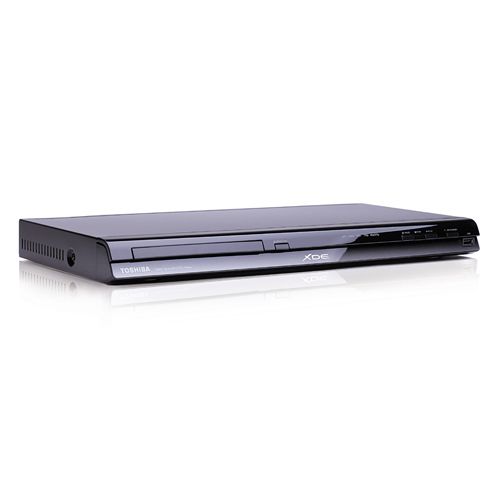Last year’s XDE-500, the first DVD player equipped with Toshiba’s eXtended Detail Enhancement (XDE) technology, certainly took upscaled picture quality to new heights, but a replacement for high-def it was not.
Our quick take
Of course the quality of this processing does highlight how mediocre the XDE-600’s non-XDE upscaled pictures are – detail is vague, colours are uninspiring and noise seems more of a problem. But then buying this player and not using XDE is like driving a Formula 1 car and not hitting the KERS boost button – keep it activated and you’ll be treated to some of the best upscaled pictures you’re likely to see at this price.

Toshiba XDE-600 DVD player - 4.5 / 5
| FOR | AGAINST |
|---|---|
|
|
Since then Toshiba has announced plans to launch a Blu-ray player, which means that this follow-up deck can be judged on its own merits and not as a Blu-ray substitute. The other good thing is that the price of the XDE-600 has been dropped to a more affordable level, costing almost half as much as its predecessor.
The feel and look of the XDE-600 is fairly similar to the rest of Toshiba’s current DVD range with its ultra-slim dimensions and snazzy gloss-black styling. Build quality is decidedly lightweight but acceptable for the money and it’s pleasing to see a USB port on the front, which allows you to play DivX, XviD, MP3, WMA and JPEG files.
With its generous array of sockets, the deck should slip into your system with minimal fuss. On the digital side you get an HDMI output as well as optical and coaxial audio outputs, while old-school users can opt for the Scart, Component or Composite video outputs – but none of these offer the benefits of XDE processing.
DVDs can be upscaled to 720p, 1080i or 1080p, and when playing an NTSC disc you can even choose to output at 1080/24p, but as the deck is locked into Region 2 it’s not much use.
XDE isn’t always activated when watching upscaled DVDs – you can toggle through three different modes using the "Pic Mode" button on the remote. Colour Mode tweaks blues and greens to give the picture a brighter and more natural look; Contrast Mode boosts the light/dark balance and makes detail in dark scenes easier to spot; while Sharp Mode improves the clarity of fine detail and edges.
Cleverly, XDE only enhances parts of the picture that need a leg up and leaves the rest alone. And very effective it is too – Colour Mode manages to boost the vibrancy of blue skies and sweeping green fields during The Fellowship Of The Ring without affecting the authenticity of skin tones and other hues.
Meanwhile, the superb Contrast Mode improves the visibility of the swarming goblins during the Mines of Moria sequence, without compromising on cinematic solidity or lessening the sense of dread and tension in this pivotal scene. During brighter scenes, it gives everything a greater sense of three-dimensionality and depth.
But if you simply want to boost detail, then the Sharp Mode does a great job. It emphasises fine textures on facial close-ups and makes scenery detail snap into sharper focus, resulting in beautifully punchy images. And it does all this without adding a hard white line around edges as some picture-sharpening modes are prone to do. In Colour and Contrast modes, this detail sharpening is also applied to the picture alongside the other enhancements.
To recap
A terrific upscaling DVD deck that uses XDE picture processing to devastating effect - just make sure you keep it turned on
